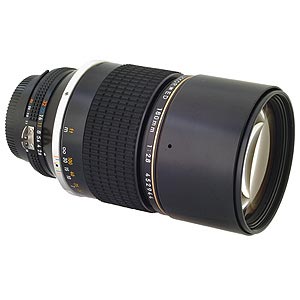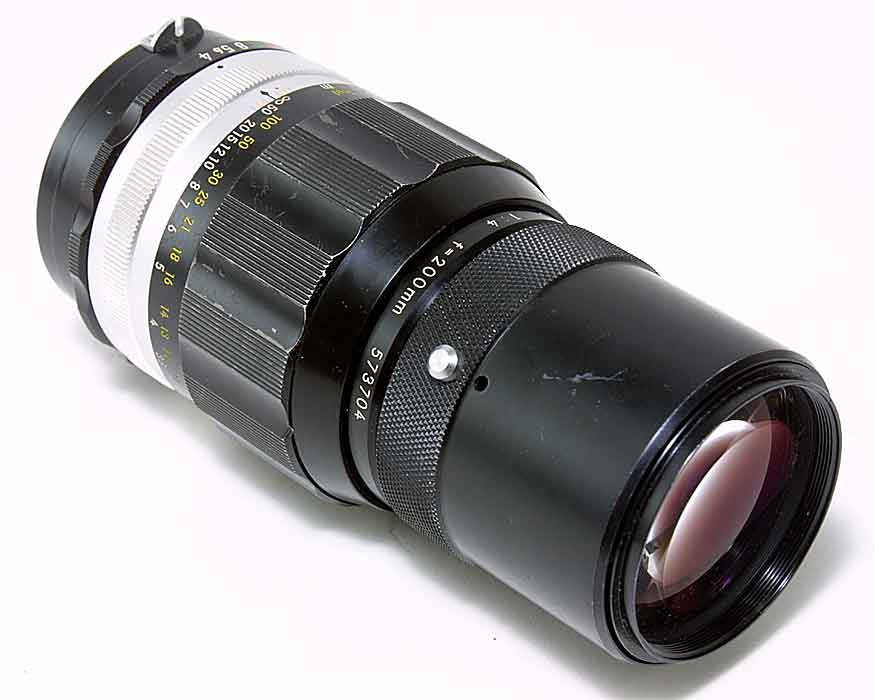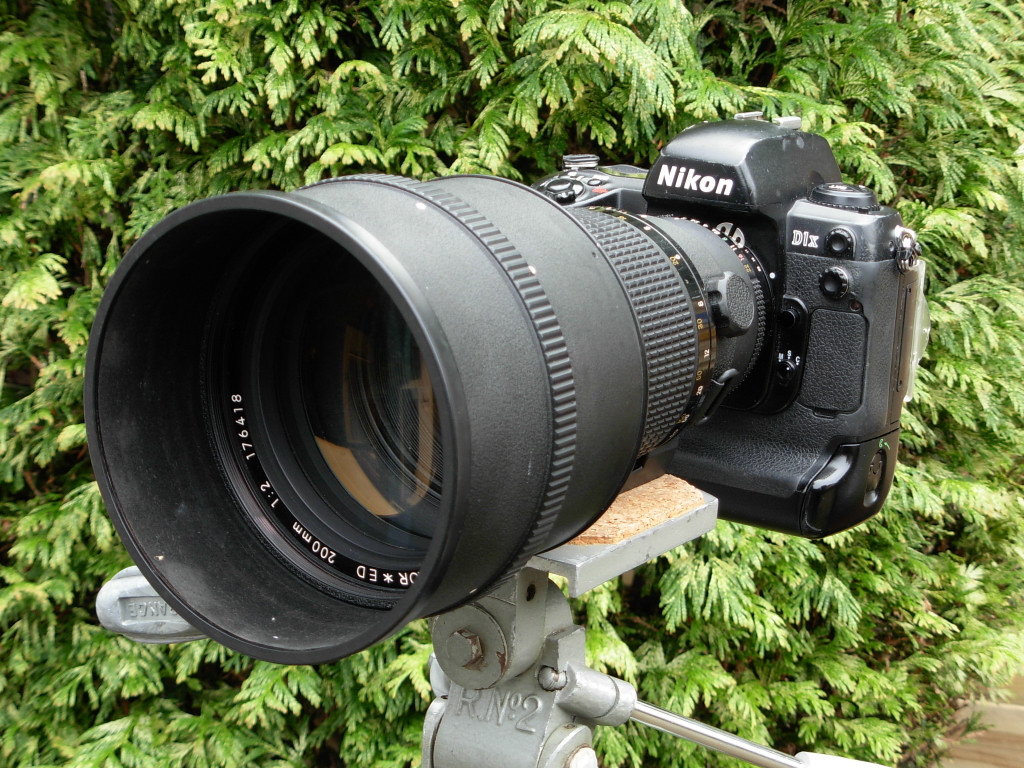Nikkor short tele-lensesNikon produced some very fine lenses with a fixed focal length of about 4 times the focal length of a standard lens. These lenses are very well usable in sports or even theater photography. Especially the fast lenses with their shallow depth-of-field are excellent instruments for ´far close-ups´. 2.8/180 mm.
This birth of this lens has a long history. At the 1936 Olympics in Berlin (Germany) the famous German lens manufacturer Carl Zeiss presented its ´Olympia-Sonnar 2.8/180 mm.´. Photographers all over the world were hilarious about this fast lens. Many competitors had to reply to this public relations act of Nazi-Germany. Fellow lens manufacturer Ernst Leitz countered with its Telyt 2.8/180 mm., later followed by its APO-Telyt-R 3.4/180 mm., APO-Elmarit 2.8/180 mm. and (much later) the APO-Summicron 2/180 mm. Olympus tried to catch up with a 2/180 mm. and the French lens manufacturer Angenieux produced a 2.3/180 mm. even in Nikon F-mount! What about Nikon? We had to wait for Nikon´s answer until November 1953. Nikon introduced a stunning Nikkor-H 2.5/180 mm.! Half a stop faster than the Olympia-Sonnar, but almost 20 years too late. The lens could/can be used on a Nikon rangefinder camera via its reflex housing or on a Nikon F SLR camera via the N-F-tube. In March 1971 the Nikkor-P 2.8/180 mm. was introduced. From the first minute this lens became very popular worldwide. Its 5 elements in 4 groups deliver razor sharp images at any distance at any aperture! The triumphal procession started! Despite the very nice and modern army of Zoom-Nikkors the latest version of this lens has no rivals. It is one of the best optics Nikon has ever produced. In a comparative test in the (pro-)German photo magazine ´Color Foto´ the AF-Nikkor 2.8/180 mm.ED-version gained the third place behind two Leica lenses. Winner was the APO-Summicron, which lens was (at the time of the test) exactly ten times (sic!) as expensive as the Nikkor! On a digital DX-camera the Nikkor lens becomes a 2.8/270 mm. tele-lens and with a TC-20 teleconverter the photographer has a 5.6/540 mm. tele-cannon! Let us see how this lens evolved through the years. The first F-mount lens was introduced in March 1971. It has an optical construction of 5 elements in 4 groups and weighs in at 830 gram. In April 1976 the version with improved coating (Nikkor-P.C) was introduced, followed in July 1977 with the 50 gram heavier AI-version. The AIS-version - introduced in October 1981 - has an altered optical construction, consisting of 5 individual elements of which one is a lens of ED-glass (ED = extra dispersion = low breaking index). The new lens design resulted in a 80 gram lower weight. In September 1986 again the lens was redesigned and presented as the first auto focus version. Apart from a new lens barrel (total weight 750 gram) the optical construction has 8 elements in 6 groups, mainly due to the internal focus system. The second element from the front is an ED-element. Only two years later (November 1988) the lens is improved again. Finally in December 1994 the lens is fitted with the D-chip for improved flash photography. 4/200 mm.
Nikkor-Q 4/200 mm. (first version) Introduced (July 1961) almost simultaneously with the Nikon F this lens became popular among photographers with a small budget. It doesn´t look like a very spectacular lens, but its performance is outstanding. Its optical construction was altered once in its total production time, which ended in 1990. The very first version (Nikkor-Q) has 4 individual elements. In February 1974 the C-(coated)-version was introduced. In March 1977 the lens (Nikkor-AI) received a new optical design: a straight lens barrel with rubber grip and an optical construction of 5 individual elements. Nikkor-AI/S 4/200 mm. (last version) The AIS-version was put on the market in December 1981. As stated this lens is a cheap entrance in telephotography. Also with a wide-angle lens mounted in reverse on this lens interesting close-ups can be made.
2/200 mm.
AI-version of Nikkor 2/200 mm. mounted on a Nikon D1X, ´converting´ the lens into a Nikkor 2/300 mm.! This beautiful lens (Nikkor 2/200 mm IF-ED) never became a popular lens. Maybe because of the excellent performing (and cheaper and lighter) 2.8/180 mm. Nearly 2.5 kilo added to a camera of at least 1.5 kilo isn´t an attractive combination to carry around. Nevertheless this lens is an razor sharp tele-lens, that can be used at any aperture. Started as an AI-version the AIS-version appeared in April 1982. In December 1985 the lens received a protective front lens alias UV-filter. Its optical construction of 10 elements (of which one in ED) in 8 groups wasn´t altered during its production time, which ended in 2005.
|


